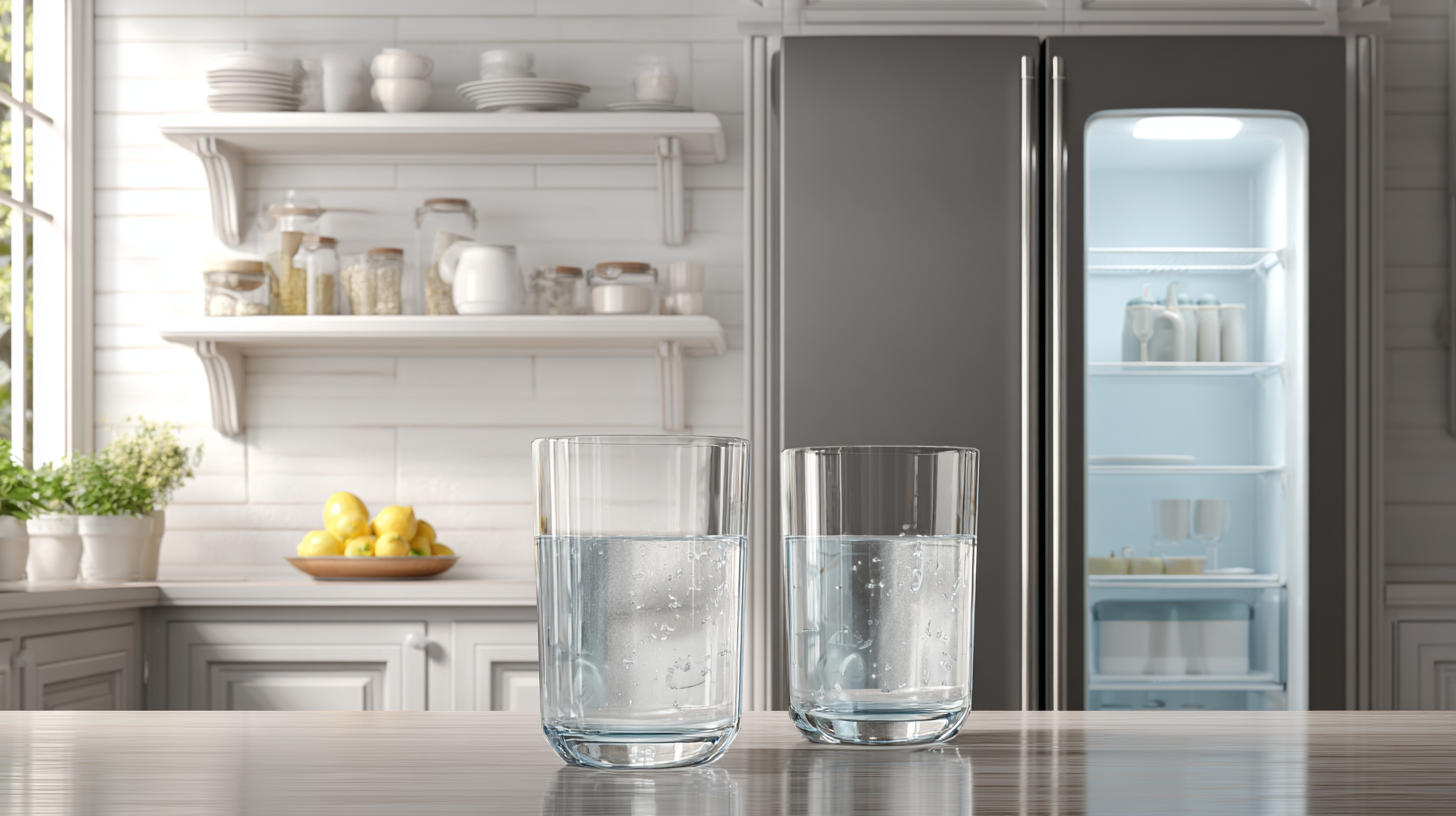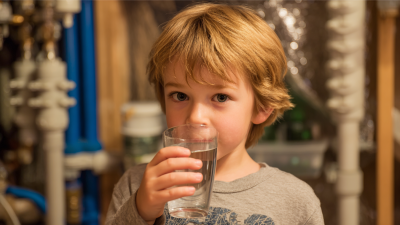The Ultimate Guide to Choosing the Best Drinking Water Filtration System for Your Home
As concerns surrounding water quality continue to rise, the importance of a reliable drinking water filtration system has never been more apparent. According to the Environmental Protection Agency (EPA), approximately 15% of all community water systems are in violation of federal health-based drinking water standards, which can lead to a host of health issues for consumers. Furthermore, a 2021 report by the Water Quality Association highlights that over 50% of American households are currently using some form of water treatment system. With an array of options available in the market, from activated carbon filters to reverse osmosis systems, selecting the best drinking water filtration system for your home can be a daunting task. Understanding the various types and their corresponding benefits is essential for ensuring the safety and quality of the water you consume daily. This guide aims to demystify the process, enabling homeowners to make informed decisions tailored to their specific needs.

Understanding the Importance of Clean Drinking Water and Filtration Systems
Access to clean drinking water is essential for maintaining good health, yet millions of people around the world face water quality issues daily. According to the World Health Organization (WHO), contaminated drinking water is responsible for approximately 485,000 diarrheal deaths each year, highlighting the urgent need for effective filtration systems. These systems can significantly reduce harmful contaminants such as lead, chlorine, and bacteria, making them crucial for ensuring safe drinking water at home.
In the United States, a report from the Environmental Protection Agency (EPA) revealed that nearly 10% of community water systems violated health-based standards in 2018. This underscores the importance of investing in a reliable water filtration system. Advanced filtration technologies, such as reverse osmosis and UV purification, can help eliminate a wide range of impurities, providing families with peace of mind regarding their water quality. By understanding the importance of clean drinking water and the role of filtration systems, homeowners can make informed choices to safeguard their health and that of their loved ones.
Exploring Different Types of Water Filtration Systems: Pros and Cons
When it comes to choosing a water filtration system, understanding the pros and cons of different types is crucial for making an informed decision. Common options include activated carbon filters, reverse osmosis systems, and UV purifiers. Activated carbon filters are known for their ability to remove chlorine, volatile organic compounds (VOCs), and other contaminants, improving the taste and odor of water. However, they may not effectively eliminate heavy metals and microorganisms, which can be a concern in some areas.
On the other hand, reverse osmosis (RO) systems provide thorough purification by using a semi-permeable membrane to remove a wide array of contaminants, including dissolved solids, heavy metals, and other impurities. According to a report from the Water Quality Association, RO systems can remove up to 99% of total dissolved solids from water, making them an effective choice. The downside is that they can waste water during the filtration process and may remove beneficial minerals alongside contaminants.
Ultraviolet (UV) purifiers offer a different method by using UV light to kill bacteria and viruses, making them a great option for ensuring microbial safety. However, UV systems do not remove chemical contaminants, so they are often used in conjunction with other filtration methods for optimal results. Each filtration system has its strengths and weaknesses, and selecting the best one ultimately depends on individual water quality needs and preferences.
The Ultimate Guide to Choosing the Best Drinking Water Filtration System for Your Home
This chart evaluates various types of water filtration systems based on their pros and cons, scored from 1 to 10. Activated Carbon and Reverse Osmosis systems score the highest, making them favorable choices for home filtration. Distillation and Ceramic Filtration, while useful, have more limitations, reflected in their lower scores.
Key Features to Look for in a Home Water Filtration System
When selecting a home water filtration system, several key features should be evaluated to ensure clean and safe drinking water. First and foremost, consider the type of filtration method used, such as reverse osmosis, activated carbon, or UV purification. Each method has its unique advantages; for instance, reverse osmosis effectively removes heavy metals and contaminants, while activated carbon is excellent for improving taste and odor. Understanding your water quality will help you choose the most suitable filtration function.
Another critical aspect to look for is the system's capacity and flow rate. If you have a larger family or use significant amounts of water for cooking and cleaning, a higher capacity unit will be essential to ensure that you never run out of filtered water. Additionally, look for systems that include a monitoring system or indicator for filter replacement; this feature can save both time and money by notifying you when it’s time to change the filters. Lastly, don’t overlook the installation and maintenance requirements—opt for a user-friendly system to ease the ongoing upkeep and ensure long-lasting performance.
The Ultimate Guide to Choosing the Best Drinking Water Filtration System for Your Home
| Feature | Description | Importance Level |
|---|---|---|
| Filtration Type | Different types such as reverse osmosis, activated carbon, or UV filtration. | High |
| Contaminant Removal | Effectiveness in removing common contaminants like chlorine, lead, and bacteria. | High |
| Installation Type | Under-sink, countertop, or whole-house systems. | Medium |
| Maintenance Frequency | How often filters need to be replaced or cleaned. | Medium |
| Certifications | Look for NSF or WQA certifications to ensure safety and effectiveness. | High |
| Water Flow Rate | Speed at which filtered water is dispensed; important for daily usage. | Medium |
| Budget | Initial purchase price and ongoing maintenance costs. | High |
| Taste Preferences | Some systems improve taste or odor of water post-filtration. | Low |
Evaluating Water Quality: Understanding Contaminants and Testing Methods
 Understanding the quality of your drinking water is crucial in choosing the right filtration system for your home. Contaminants such as lead, chlorine, and bacteria can significantly affect health. According to the Environmental Protection Agency (EPA), approximately 10% of the nation’s water systems have reported detecting lead, which can cause severe health issues, especially in children. Testing your water for such contaminants can help you determine the most effective filtration method. Common testing methods include at-home test kits and professional laboratory analysis, each offering varying levels of accuracy.
Understanding the quality of your drinking water is crucial in choosing the right filtration system for your home. Contaminants such as lead, chlorine, and bacteria can significantly affect health. According to the Environmental Protection Agency (EPA), approximately 10% of the nation’s water systems have reported detecting lead, which can cause severe health issues, especially in children. Testing your water for such contaminants can help you determine the most effective filtration method. Common testing methods include at-home test kits and professional laboratory analysis, each offering varying levels of accuracy.
Tips: Regularly check your local water quality report, which provides valuable insights into contaminants present in your water supply. Additionally, consider conducting a water test at least once a year to keep an eye on any changes.
When it comes to filtration, different systems target different contaminants. Activated carbon filters are effective against chlorine and sediment, while reverse osmosis systems can remove heavy metals and dissolved solids. The Water Quality Association states that using the appropriate filtration system can reduce up to 99% of certain harmful substances, enhancing the safety and taste of your drinking water.
Tips: Take into account the specific contaminants you are testing for and choose a system tailored to eliminate those. Research certifications from organizations such as NSF International, which ensure that filtration systems meet strict safety and performance standards.
Cost Analysis: Budgeting for Purchase and Maintenance of Filtration Systems
When considering a drinking water filtration system for your home, it's essential to understand the costs associated with both the purchase and ongoing maintenance of these systems. Initially, prices can range significantly based on the type and brand of the filtration system. For example, a simple pitcher filter may cost anywhere from $20 to $50, while more advanced reverse osmosis systems can run from $200 to over $1,000. It’s crucial to decide on a budget that aligns with your water quality needs and lifestyle.
In addition to the initial purchase price, maintenance costs must also be factored into your budget. Regular filter replacements are necessary to ensure optimal performance and safety, with costs varying depending on the system. For instance, some filters need replacement every few months, averaging between $30 to $100 each time, while others may offer longer-lasting options. Furthermore, consider any additional expenses like professional installation services or water quality testing kits. Taking a comprehensive view of both purchase and maintenance costs will help you make an informed decision that suits your financial situation and water filtration needs.



